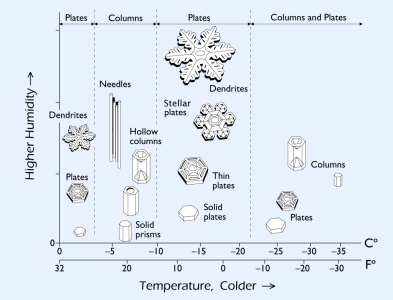
As skiers, we spend countless hours chasing powder, but how much do we really know about those weird crystals that make our favorite sport possible? The science behind snow crystal formation isn’t just beautiful–it’s crucial for understanding everything from avalanche risk to why that last storm dropped such perfect powder.
The Basics of Snow Crystal Formation
Let’s start with the fundamentals: a snow crystal isn’t just frozen water–it’s an ice crystal that grows directly from water vapor in the atmosphere. Think of it like building a house, but instead of bricks and mortar, you’re working with water molecules that attach themselves to a tiny particle (like dust or pollen) floating in the clouds. This particle becomes the foundation for our snowflake’s journey.
Unlike the wet globs of snow that might hit your goggles during a storm, individual snow crystals are masterpieces of molecular architecture. Each one starts its life when water vapor molecules find that initial nucleation site – essentially, their building permit to start construction.
The Role of Temperature and Humidity

Here’s where things get interesting for us snow lovers. The temperature and humidity levels your future powder turns encounters dramatically influence what kind of snow crystal forms. Ever notice how some storms produce light, fluffy snow while others drop heavy, wet snow? The secret lies in these two factors.
Temperature is like a blueprint for the crystal’s shape:
- Around -2°C (28°F): Thin, plate-like crystals form
- Around -5°C (23°F): Needles and columns take shape
- Around -15°C (5°F): The classic dendritic (star-shaped) crystals develop
- Below -30°C (-22°F): Simple plates and columns appear
But temperature isn’t working alone. Humidity (or supersaturation) acts like the construction crew, determining how quickly and elaborately the crystal grows. Higher humidity means faster growth and more intricate branching; exactly what we want for that champagne powder we all dream about.
The Journey from Cloud to Ground

Remember that perfect pow turn you scored last season? The snow that made it possible went through an incredible journey to get there. As a snow crystal falls from the clouds, it’s like a skier taking different lines down the mountain–each path unique, each turn affecting the final outcome.
Starting high in the clouds where temperatures might be -20°C (-4°F), the crystal begins its descent through layers of varying temperature and humidity. Wind currents act like nature’s terrain park features, tossing the crystal around and exposing it to different conditions. Each bump, turn, and environmental change adds another unique detail to the crystal’s structure.
Why No Two Snowflakes Are Alike
You’ve probably heard that no two snowflakes are identical. As someone who studies snow stability and avalanche risk, I can tell you this isn’t just a cool fact to share on the chairlift. The unique nature of each snow crystal comes down to chaos theory in action.
Think about it this way: each crystal experiences slightly different conditions during its formation and descent. Even a fraction of a degree difference in temperature or the smallest shift in humidity can alter how the crystal grows. When you consider that a typical dendritic snow crystal might make a million billion different growth decisions during its formation, the odds of two being identical become astronomically small, like hitting the same line through trees on every run.
What It Means For Us Skiers
Understanding snow crystal formation isn’t just about appreciating nature’s artistry; it’s crucial for backcountry safety and finding the best snow conditions. Different types of snow crystals bond differently in the snowpack, directly affecting avalanche risk. Those beautiful stellar dendrites that make for such great powder turns? They can also create weak layers when buried under denser snow.
Current research in snow crystal science is helping us better predict how different crystal types contribute to snowpack stability and when weak layers will develop in the snowpack.
For example, surface hoar (feather-like crystals that form on calm, clear nights) might be beautiful, but finding them buried in the snowpack is a red flag for avalanche risk. Understanding how and why these crystals form helps us make better decisions in the backcountry.
Conclusion
Next time you’re standing in the lift line while fat flakes fall from the sky, take a moment to think about the tumultuous journey each crystal took to get there. From a microscopic speck of dust to the powder turn you’re about to make, these six-sided wonders are more than just frozen water – they’re nature’s perfect blueprint for an epic ski day.
Remember: understanding snow science isn’t just about satisfying our curiosity. It’s about becoming better, safer skiers who can read the mountain’s story written in snow. So next time someone asks you why today’s powder is so perfect, you’ll know exactly what conditions came together to create your perfect turn.